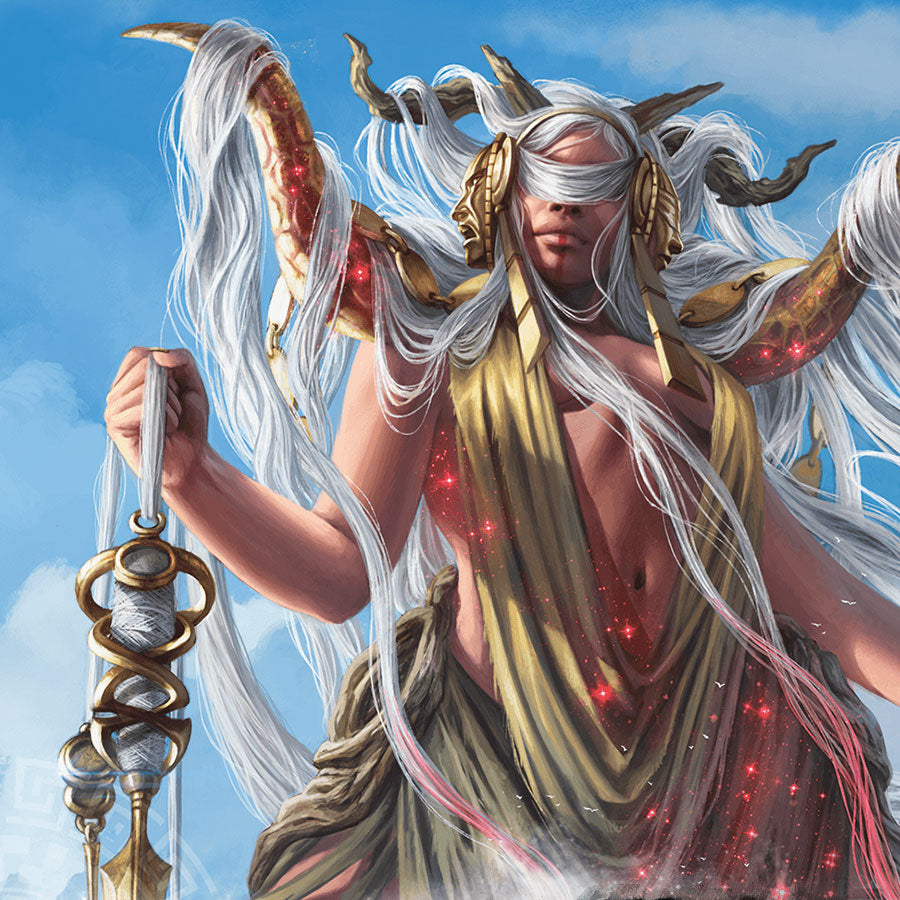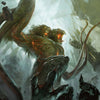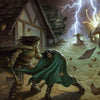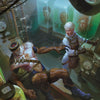How to Design D&D Homebrew Like a Pro

Written by Luke Hart
Most D&D homebrew leaves something to be desired. Go over to D&D Beyond and look at some of the homebrew spells and magic items that have been created. I mean, I’ve seen things like cantrips that allow you to heal. You can’t tell me that’s some SOLID homebrew right there.
The fact of the matter is almost every game master homebrews something eventually, whether it’s a monster, a magic item, a spell, or an adventure. Now, some GMs homebrew more than others, of course. However, the fact that we all homebrew makes us all GAME DESIGNERS. And the question here is, are you a GOOD game designer?
Hi, I’m Luke Hart, and on this site, I share my nearly 30 years of game master experience so that you can run amazing games that your players will love. And today we’re talking about how to be the best game designer you can be for your tabletop roleplaying game.
Watch or listen to this article by clicking the video below.
Now, I don’t actually believe that most homebrew is trash. I think there is TONS of amazing homebrew content out there and that game masters create amazing stuff every day for their games. But I do think that a lot of it could use some tweaking here and there to make it even better.
And by the way, there is absolutely NO POSSIBLE WAY that I can teach you everything you need to know about being a good game designer in one article. And even if I could, I don’t know everything myself about game design. I am AT BEST around level 10 of 20, and even veteran game designers in the industry such as Mike Mearls will probably tell you that they are constantly developing their craft and learning new things every day. I am nowhere near that level myself, but I do know a few things that hopefully you’ll find helpful, and that’s what we’re talking about today.
Game Master Stuff
The first part of the game where you’re likely to flex your game designer muscles is a category we’ll just call “Game Master Stuff.” This includes designer elements such as monsters, traps, puzzles, NPCs, and things like that.
Generally speaking, anything that falls into the category of “Game Master Stuff” is something that will have a momentary appearance at the game table, stick around for a half an hour, maybe an hour, and then will be gone, perhaps ever to be seen again. And this an important distinction because these items, because of their transitory nature, will usually have a minimal impact on long-term gameplay.
Take a monster, for instance. If you homebrew a mind flayer for you Pathfinder 2 game, like I recently did, and it ends up being WAY TOO POWERFUL, and the group nearly TPKs…well, you know, there is an impact—the group has a rough game session, which might actually be enjoyable for players who enjoy challenges—but it’s only a momentary impact. Because mind flayers only show up during that one adventure, the rest of the game isn’t really impacted.
The same is true for traps, puzzles, and other Game Master Stuff. They show up, have a momentary impact, and are gone.
But why does this matter? Because YOU have a limited amount of time as a game master. If you spend 5 hours homebrewing a mind flayer, that’s LESS TIME you have to design the actual adventure, or create the maps, or find tokens to use in Foundry, or paint miniatures, or whatever. So, from a time-management standpoint, try to be as EFFICIENT as possible when designing Game Master Stuff in this category.
Now, you want to follow the rules in the books, of course. Most game systems worth their salt will include the mechanics and rules for creating Game Master Stuff. For instance, both D&D 5e and Pathfinder 2 include monster creation mechanics so you can create your own.
This kind of goes without saying, but I’ll say it explicitly JUST ONCE: if the game designers of the system that you are running provided creation mechanics you should LEARN THEM and USE THEM when you homebrew stuff. I think far too many game masters just make stuff without learning those rules and really understanding the game system that they are designing things for.
And I’ve made this mistake myself. I get it. We get super excited. We want to make a thing, and reading all those rules is just a lot of work. But if we don’t do it, we get a sub-optimal, perhaps even completely broken, game element.
So, for Game Master Stuff, follow the creation rules, get your cool new thing, and put it in the game. And notice a step that we DID NOT INCLUDE: playtesting. And why not? Well, if you’re only using the thing for your own personal game, it doesn’t really matter. Remember, the long-term impact is MINIMAL; the thing is there for 30 minutes and then gone. Furthermore, if you find there’s something WRONG with it, you can usually adjust it on the fly, during the game.
Check this out. When I was designing my mind flayers for my Pathfinder 2 game, the FIRST VERSION of my mind flayers was too weak. My players were STEAMROLLING them. So, in between game sessions, I reworked them and made them stronger. Then, in the next session, I think my mind flayers were a tad TOO POWERFUL, and my players had a MONSTER of a boss fight against the mind flayer overseer, and they nearly wiped. But they didn’t. They survived. Well, two of them didn’t. Two of them had their brains eaten. But hey, it was the BOSS FIGHT against mind flayers, some of the MOST TERRIFYING monsters in the game, what would you expect? My players will either make new characters or their dead ones will get resurrected. That’s just part of the game.
Remember, too: the more you run the game, the better you’ll get at game design. These mind flayers were, I think, the FIRST monsters that I personally homebrewed for Pathfinder 2, and that was after a bit over a year of running that game system. It would have been unreasonable for me to expect that my first monsters would be perfect. And of course they weren’t. However, I did the best I could and learned a few things from the experience, things that I’ll carry forward into the next time I create homebrew monsters. And this is really all you can do: do you best, make mistakes, LEARN from those mistakes, and do better next time.
Player Stuff
The next big category of game design is Player Stuff. These are the things that, by and large, PLAYERS will use, and one of the defining characteristics of Player Stuff is that they are LONG-LIVED at the game table. These are elements such as spells, magic items, races, classes, subclasses, and the like.
Any of these elements, once introduced into the game, are likely to be there FOR A LONG TIME, meaning their impact on game play is NOT temporary. Once your player has that super amazing magic item that you homebrewed—they have it, and good luck prying it from their grasp after you find out how overpowered it is. Unless a character dies, your homebrew LUCKY BARBARIAN subclass is going to be in the game for a LONG TIME.
And because of the longevity of Player Stuff, your approach to creating it needs to be a little different.
Now, the first issue you’re likely to run into is that many times creation rules are NOT provided for Player Stuff, at least not things like races and classes and subclasses. Magic items and spells usually do have creation rules in the Game Master Guide or whatnot. So, this means that you need to make educated game design decisions or GUESSES. And the key to doing that well will be analyzing existing official elements.
So, if you want to homebrew a new class, your first step is going to be to STUDY existing classes and analyze how they are created. There is often a pattern to what classes get at different levels, and there is usually a POWER LEVEL that features at different levels are trying to hit. Your goal will be to figure that out the best you can. This will probably be as much art as it is science, and what you arrive at won’t be perfect.
That’s why your next step will be COMPARISON. Take that class or subclass or race you made, and compare it to other existing ones. Is yours on the same power curve as best you can tell? Or is yours so much more powerful, that EVERY PLAYER will want to use it? If you’re roughly at the same level, then you’re probably good.
By the way, COMPARISONS are great for game design in general, and for Game Master Stuff just as much as Player Stuff. Whenever you get done making a thing, compare it to other official content to see how yours stacks up. Now, this approach isn’t PERFECT, because some official content can be poorly balanced, depending on your game system, of course. But comparison is USUALLY quite helpful.
Finally, with Player Stuff, you MUST PLAYTEST. The problem is, playtesting it YOURSELF is usually challenging to impossible to do because a REAL playtest will involve using the class, subclass, race, spell, or whatever frequently over an extended time to really get a feel for its balance and make tweaks as needed.
So, my recommendation is playtesting it with your players IN THE ACTUAL GAME. Introduce the thing—let’s say it’s a the Lucky Barbarian subclass—and tell your players its an ALPHA version that will be getting changes and tweaks as you all playtest it. Then say one player decides to use it. Great.
While you all play the game, you’ll be able to observe how the subclass performs, and how your players feel about it. More than likely, conversation will come up ORGANICALLY during the game, and you can discuss and make changes on the fly. However, you’ll probably also want to have an occasional planned time to discuss the subclass and determine any changes.
Remember, too, it’s important to get feedback from EVERYONE, not just the player playing the Lucky Barbarian subclass. Getting input from all players who have unique perspectives will be critical. The Lucky Barbarian player may think the subclass is under-powered, but that may only be because they are a min-maxer who is ALWAYS looking for more power. The Paladin player can quickly point out that the Lucky Barbarian is TOO POWERFUL and outperforms some of the more powerful classes in the game, such as the paladin.
I think what you’ll find is that designing Player Stuff is as much a game master thing as it is a GROUP EFFORT that involves your players. And why shouldn’t it? It’s player content, so it makes sense that players should have some input on the matter.
House Rules
Most game masters won’t have to create entire game systems, but you will almost certainly need to create special house rules at some point. A house rule could be as simple as a special ruling—for instance, in many D&D games, characters can drink healing potions with a bonus action—or it could be as complex as a crafting system that uses monster body parts.
Whether you make house rules because you need to shore up something the core game overlooked, or because you want to add something special to the game, I have TWO main pieces of advice for house rules.
First, before you create house rules, you really should have a solid understanding of the core game system. If you don’t, the chances are good that you’ll create unintended consequences, and possibly mess things up royally. And, I don’t think you can really have a solid understanding of a game system until you’ve PLAYED it for a while. Reading the rule book just doesn't cut it. There’s something about EXPERIENCING the game that gives you a depth of understanding that really helps when you start to get under the hood and goof around with underlying mechanics.
Now, sometimes you won’t have a choice but to make a house rule, even if you’re new to the system. If your player wants to sleep in heavy armor but the rules don’t address it, you’ll have to make a call. That’s just life. I’m just saying, don’t go out of your way to tinker with things until you’re ready for it.
Second, before making a house rule, ask yourself if the INCREASE IN FUN will be worth the added game mechanics. Remember, game mechanics can easily get in the way of playing the game, especially if they add additional rules and bog to the game. So, you may not LIKE the way carrying capacity works in D&D. You may think its dumb and unrealisitic. However, will creating your own homebrew carrying capacity system make the game MORE FUN for you and your players? No, probably not. There is a reason that many GMs just give out bags of holding like candy: carrying capacity and tracking it is part of the game that USUALLY just doesn’t float it for most people.
At the end of the day, if your house rule or the new game mechanics that you homebrewed did not increase everyone’s fun, then you have to ask yourself, why the heck did you even do it? Remember, people play these games to have fun, not to run the perfect fantasy world simulator.
Now, house rules usually fall into the camp of having a LONG-TERM effect on the game, so they are something you will want to playtest in collaboration with your players and make changes as needed.
Creating Adventures
Frankly, this is where A LOT of game masters spend most of their time as game designers, and it rather makes sense because MOST OF THE GAME takes place in the framework of the adventures that characters go on. So, you might say that this is perhaps the most ESSENTIAL aspect of game design for game masters. And while TECHNICALLY creating adventures falls into the Game Master Stuff category for the most part, there are a few special things I want to mention.
First, when designing an adventure, consider ALL THREE PILLARS of the game: social interactions, exploration, and combat. All good adventures include a mix of all three.
Next, ensure a variety of difficulties in challenges—such as traps and puzzles—and combats. This avoids making things too easy or too hard, and the VARIETY itself will make gameplay more compelling and dynamic for your players. Nothing is quite so boring as a game where you KNOW every combat will be brutal—or where every combat will be a cakewalk.
Third, make things INTERESTING! Provide new discoveries, unique circumstances, novel challenges for your players to encounter.
Finally, strongly consider tying in elements from character backstories into your adventures. This isn’t required, but it can make players super invested and care much more deeply about the game, and usually with minimal effort.
Now, there’s a whole lot more I could say about adventure creation, because, well, I already have several videos on the topic. If you want to check them out, see my Adventure Creation Playlist.
Improvisation
I suspect that this aspect of the role of game designer is less intuitive, but you’re probably going to find that you do A LOT of game design on the fly during your games.
Let’s say you planned out your adventure in detail, but you can SEE that your players don’t seem to be having fun during the session. So, a quick analysis of the situation may determine that they are bogged down in a social interaction scene that only one player is really interested in. The other players are just waiting for it to be over, but it's taking FOREVER. That may be the perfect time to step in as the game designer and decide that you need something exciting to happen immediately.
And that’s when part of the roof caves in and the characters look up to see a giant extracting its club from the room. “I knew you were in there,” it bellows. “Now give me back Yolanda or I squash yous all!” Who the heck is Yolanda, and what does this giant want? Well, it turns out that the NPC they were talking with knows all about Yolanda, and it’s a dirty little secret that the characters may be about to discover.
And NONE OF THAT was going to happen. You designed it ON THE SPOT in reaction to the bored faces you say on your players. But now they are interested—and wondering what a bunch of level 1s are going to do against a mountain giant… They’d better find out who Yolanda is and fast!
Now, improvisation will always rely in part on your own CREATIVITY, and we’re not going to open that box in this article—but the other part of improvisation relies on KNOWING THE RULES, knowing the INTENT behind the rules, and just a general solid understanding of GOOD GAME DESIGN.
The other thing improvisation relies on is EXPERIENCE. Generally speaking, the more experienced you are as a game master and game designer, the better you’ll be at improvising. This isn’t always true, but USUALLY it is.
So, some of these aspects of improvisation you can work on getting better at, while others you’ll just have to put in your time as a GM and game designer.
A Word About Fun
Above all, remember this: the game is all about having fun. If you or your players aren’t enjoying the game session, does it really matter if you’re a great game designer? Furthermore, if everyone is having the TIME OF THEIR LIVES, but you’re a HORRIBLE game designer, then does that really matter? Now, I certainly think you’ll find that the better designer you are, the more fun folks will usually have—but my point is simply this: The game is about having fun, and fun supersedes most other considerations.
100 Years of GM Experience at Your Fingertips!
Are you a NEW GAME MASTER feeling a bit overwhelmed by everything involved with running a role-playing game? Are you a VETERAN GAME MASTER looking for new tips and tricks to take your games to the next level? Look no further than the Secret Art of Game Mastery.
We at the DM Lair have distilled our CENTURY of accumulated GM experience into an easy-to-read guide of practical advice that you can immediately apply to your games! We've even included our own templates–the things that we use to prepare our ACTUAL games.
Get all three books to master your game:
- The Secret Art of Game Mastery. Contains over 100 years of GM advice distilled into an easy-to-read format. It introduces and explains the tools of the trade, scheduling, playstyle, post-game notes, getting player feedback, and more.
- The Secret Art of Preparation. Brings to your fingertips the actual templates and guides that the DM Lair team uses to prepare games, Lair Magazine, and more. Designed as a three-ring binder, it's intended for you to write directly into for your entire campaign!
- The Secret Art of Notetaking. Gives you the keys to tracking your campaign from session to session just like the DM Lair team. Designed as a three-ring binder, it's intended for you to write in and keep track of your whole campaign!
With so much knowledge and experience on its pages, The Secret Art of Game Mastery is guaranteed to become an indispensable tool for all game masters, new and veteran alike. And if that isn’t enough, the information applies to all game systems and all genres!
-
Posted in
Game Master How-To Articles







